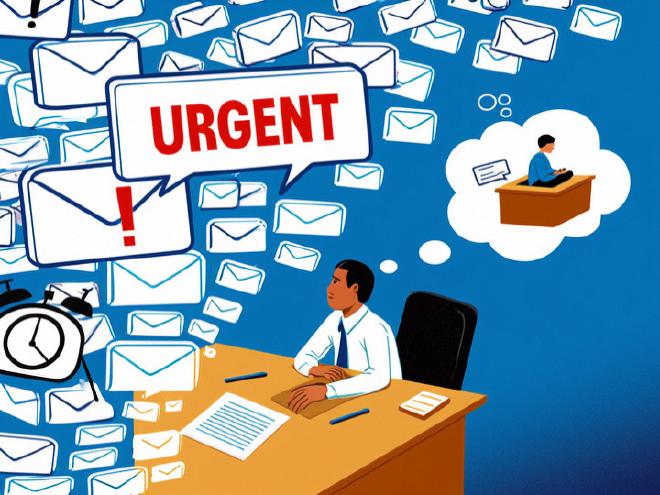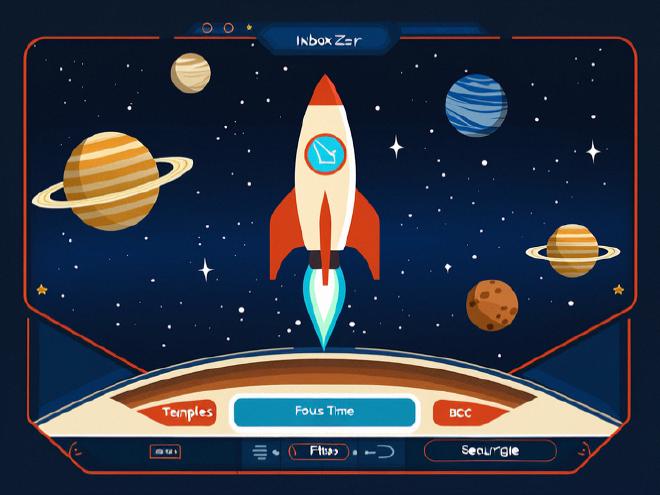10 Tips for Education and Research Staff to Use Email Effectively
Table of Contents
In today’s fast-paced academic environment, email remains the cornerstone tool for communication among educators, researchers, students, journal editors, and project collaborators. Yet, a cluttered inbox filled with unread messages, unclear communication, and potential security risks often leaves researchers feeling overwhelmed and less productive. How can you enhance both the quality and efficiency of your email communications while ensuring information security? This article reveals 10 practical tips for education and research professionals to help you transform from an “email slave” into a “communication pro.”

1. Clarify Your Email Purpose: Think Before You Write #
An effective academic email must have a clear objective. Before drafting, ask yourself three key questions:
- What do I want the recipient to understand?
- What action do I need them to take? (e.g., reply, revise, confirm, forward)
- Is there a more efficient way to achieve this goal?
Tip: Focus on just one topic per email. Trying to address multiple tasks at once can lead to missed details or delays.
✅ Pro Tip: Summarize your email’s purpose in a single sentence and place it as the first line of your message, such as: “This email is to invite you to join our cross-institutional research project on AI applications in education.”
2. Follow Academic Email Writing Standards: Be Professional Yet Polite #
Academic communication demands precision and respect. A well-crafted email should include the following elements:
- Appropriate Greetings: Use formal salutations like “Dear Professor Zhang” or “Dr. Smith.”
- Concise Self-Introduction (especially when contacting someone for the first time).
- Logical Structure: Organize your message clearly with distinct paragraphs.
- Polite Closing Phrases: End with expressions like “Thank you for your time and consideration.”
- Complete Signature Block: Include your name, title, affiliation, contact details, personal website, or ORCID link.
Avoid colloquial language or emojis—maintain a professional tone without sounding overly stiff.
3. Optimize Email Subject Lines: Make Them Clear at a Glance #
The subject line is crucial for determining whether your email gets opened. A strong subject line should:
- Be specific: Avoid vague phrases like “Hello” or “Inquiry.”
- Place important keywords upfront: For example, “【Submission Inquiry】Review Progress Update for Manuscript ID #2024-876.”
- Indicate urgency if necessary: Such as “【Urgent】Meeting Agenda Confirmation – Deadline Sept 20.”
🔍 Data Insight: According to Microsoft research, emails with specific action-oriented subject lines have a 37% higher open rate.
4. Use the “Three-Part Structure” for Better Readability #
To improve readability and save time, adopt a “three-part structure”:
- Introduction: Briefly state your purpose and provide context.
- Body: Offer detailed information, data, or instructions, possibly including attachments.
- Conclusion: Clearly outline the next steps and any deadlines.
Use short sentences, bullet points, and bold text to highlight key information, making it easier for recipients to scan quickly.
- Submission deadline for draft paper: October 15, 2024
- Additional experimental data required: Section 4, Results Analysis
- Suggested date for next meeting: October 18, 9:30 AM
5. Manage Recipients Wisely: Avoid Overusing Mass Emails #
When sending group emails:
- Use BCC to protect privacy, especially when emailing large groups of students or unfamiliar contacts.
- Clearly distinguish between “To,” “CC,” and “BCC” recipients.
- Refrain from unnecessarily copying supervisors or colleagues to minimize distractions.
Special Reminder: When submitting materials to journal editors, never reveal reviewers’ email addresses in the CC field.
6. Set Specific Times for Email Management to Avoid Frequent Interruptions #
Research shows that academics check their inboxes more than 50 times daily, with each task switch taking about 6 minutes to regain focus. This habit is highly detrimental to deep, focused research work.
Recommended Practice:
- Schedule 2–3 dedicated time slots each day to handle emails (e.g., 9:00 AM and 3:00 PM).
- Use “Follow Up Later” labels or task management tools like Outlook To-Do or Todoist to mark emails requiring attention.
- Enable “Do Not Disturb” mode to block non-urgent notifications.
7. Create Smart Folders and Filter Rules for Efficient Organization #
Leverage your email platform’s automation features to streamline your workflow:
- Set up dedicated folders such as “Pending Replies,” “Collaborative Projects,” “Journal Submissions,” and “Student Inquiries.”
- Configure filter rules to automatically sort emails from specific domains (e.g., @springer.com) or containing certain keywords (e.g., “review invitation”).
- Pin important contacts and prioritize relevant conversations.
This approach allows you to quickly locate critical emails amidst a sea of information, significantly reducing search time.
8. Handle Attachments and Links Carefully to Ensure Security #
Education and research often involve sensitive data, such as student records or unpublished findings. Therefore, email security should always be a top priority:
- When sending confidential files, use encrypted archives or secure cloud links (e.g., OneDrive permissions or WeTransfer Pro).
- Avoid clicking on suspicious links or downloading unknown attachments.
- Regularly update your passwords and enable two-factor authentication (2FA).
- Never log into your email account on public Wi-Fi networks.
⚠️ Real-Life Warning: A researcher at a university accidentally leaked sensitive student data by sending an unencrypted email containing personal information, leading to disciplinary action and public criticism.
9. Archive and Clean Up Regularly to Maintain Inbox Health #
An unorganized inbox not only hampers retrieval but can also strain server resources or even cause backup failures.
Suggested Actions:
- Conduct a monthly archive session, moving completed communications to their respective project folders.
- Delete irrelevant subscription emails or promotional content.
- Remove large attachments (use commands like “search has:attachment larger:10MB” to locate them).
- Back up important emails locally or to cloud storage services.
10. Leverage Templates and Tools to Boost Productivity #
For repetitive emails—such as course announcements, responses to reviewer comments, or collaboration invitations—you can pre-create standardized templates to save time while maintaining consistency.
Recommended Tools:
- TextExpander / AutoHotkey: Set up shortcuts to insert frequently used phrases with a single keystroke.
- Boomerang for Gmail: Schedule emails, set reminders, and automatically recall unsent messages.
- Grammarly / Hemingway Editor: Check grammar and readability to enhance professionalism.
Final Thoughts: Turn Email from a Burden into a Research Ally #

For education and research professionals, email is not just a communication tool—it’s also an extension of your professional identity. Mastering these 10 strategies will not only boost your communication efficiency and prevent overlooked details but also strengthen your credibility, ultimately enhancing your collaborative efforts and career growth.
📌 Call to Action: Start today by dedicating 30 minutes to optimize your email setup, create your first template, and establish a daily email management routine. Small changes can lead to significant improvements in productivity!
Keyword Summary: This article focuses on “Email Tips for Education and Research Professionals,” offering in-depth insights into “Academic Email Writing Guidelines” and providing actionable strategies for “Efficient Email Communication.” These tips are designed to help researchers navigate their busy schedules with ease and confidence.
Tags: Educational Technology Research Productivity